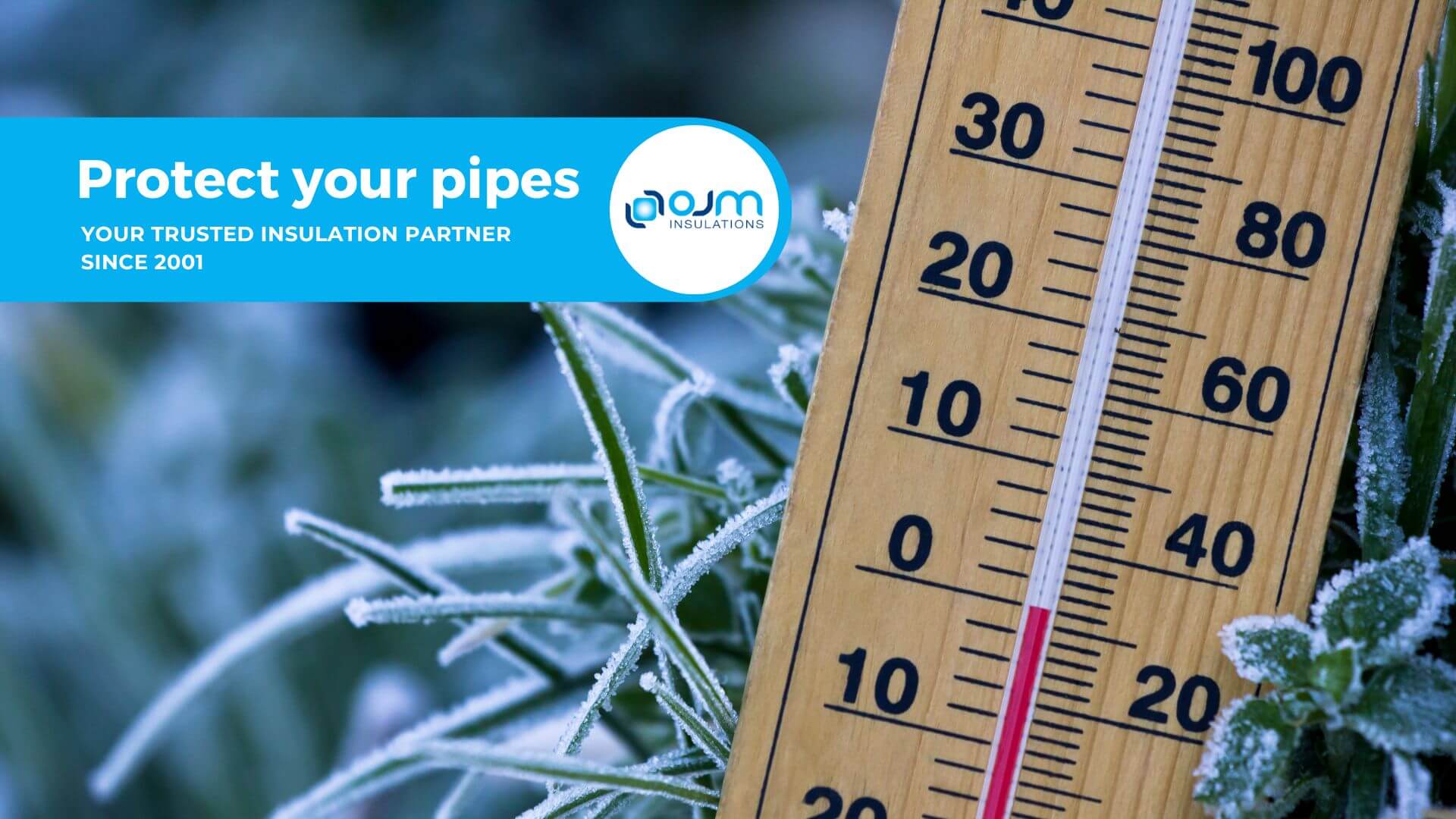Winter in the UK brings challenges for businesses, and frozen pipework is a significant concern. Not only can freezing pipes disrupt operations, but they can also lead to costly repairs and downtime. When temperatures drop, water inside pipes can freeze, causing them to expand and, in extreme cases, burst. This not only results in expensive repairs but can also halt operations, damage equipment, and impact employee productivity.
Preventing frozen pipes should be a priority for businesses, particularly those with exposed or poorly insulated pipework. By implementing effective insulation, advanced heating solutions, and regular maintenance, you can protect your infrastructure and ensure business continuity even in the harshest winter conditions.
Insulate Pipework Effectively
One of the most reliable ways to prevent frozen pipes is to ensure they are well-insulated. Insulation acts as a thermal barrier, reducing heat loss and maintaining stable temperatures within the pipework. Using premium materials such as phenolic or mineral wool provides robust protection, even in sub-zero temperatures.
It’s not just external pipes that are at risk—internal pipes can freeze if they are located in unheated or poorly ventilated areas such as warehouses, or storage spaces. Pipes running along external walls or in draughty locations should be given extra attention. Ensuring that insulation is properly fitted and maintained can significantly reduce the risk of freezing and bursting.
Maintain a Consistent Temperature with Trace Heating
Trace heating is an advanced and highly effective solution for preventing frozen pipes. This system involves installing electrically powered heat cables along your pipework to maintain a consistent temperature. The cables generate enough heat to prevent water from freezing, ensuring smooth operation even in freezing conditions.
Trace heating is particularly beneficial for businesses with extensive outdoor pipework or those operating in industries where water supply is critical, such as manufacturing, healthcare, and hospitality. When combined with quality insulation, trace heating provides an additional layer of protection, making it one of the most effective measures against pipe freezing.
Seal Drafts and Exposed Areas
Preventing cold air from reaching vulnerable pipework is another important step in winter-proofing your business. Draughts from doors, windows, and ventilation points can dramatically lower the surrounding temperature, increasing the likelihood of freezing.
Conducting a thorough inspection of your premises to identify gaps, cracks, and unsealed openings is crucial. Sealing these areas with appropriate materials, such as weather stripping, expanding foam, or caulk, can help prevent cold air ingress and improve energy efficiency. Additionally, keeping internal doors closed and using thermal curtains in warehouse or industrial settings can help stabilise temperatures and reduce heat loss.
Regular Maintenance and Monitoring
Even with high-quality insulation and heating solutions in place, regular maintenance is essential to ensure their effectiveness. Over time, insulation materials can degrade, and trace heating systems may require adjustments or repairs. Scheduling routine inspections helps to identify potential weaknesses before they develop into costly problems.
Monitoring systems can also play a key role in protecting your pipework. Temperature sensors and smart monitoring devices can alert you if temperatures drop to a critical level, allowing you to take action before freezing occurs. In industries where consistent water supply is essential, automated monitoring can provide peace of mind and help prevent unexpected disruptions.
Why Choose OJM Insulations?
With years of experience insulating pipework for commercial and industrial clients, OJM Insulations offers:
- Proactive Maintenance Services: Keep your systems in peak condition with regular inspections and updates.
- Expert Insulation Solutions: Protect your business with industry-leading materials and techniques.
- Trace Heating Installation and Maintenance: Ensure consistent pipe temperatures with reliable, tailored trace heating systems.
Conclusion
Protecting your business from frozen pipes is not just about avoiding inconvenience, it’s about safeguarding operations, preventing costly repairs, and ensuring continuity during winter. Investing in high-quality insulation, implementing trace heating, sealing draughts, and conducting regular maintenance can make a significant difference.
Don’t wait until freezing temperatures cause disruptions. Take proactive measures now to keep your pipework secure and your business running smoothly throughout the colder months.

